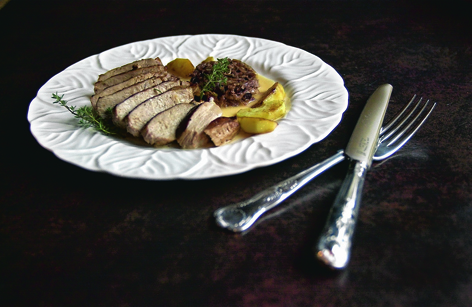The pheasant shooting season closes at the end of this month. Now, pheasant is extremely inexpensive, and easily available for everyone to buy, even in the innermost centres of cities and towns.
I find that the thing that puts people off trying pheasant is the fear that they may have a strong, gamey taste. Nothing could be further from the truth. Pheasant are as mild in flavour as chicken, and can be substituted for chicken in any chicken recipe.
Pheasant needs hanging, like all meat. Its flavour improves and so does the texture of the birds.
Pheasant is delicious eating, and very versatile. Straight roast pheasant, with rashers of streaky bacon covering the birds before roasting, to prevent the meat from drying out during cooking, and served with bread sauce, gravy and game chips, with a green vegetable such as braised kale or steamed Brussels sprouts makes a wonderful meal.
But by now, towards the end of the pheasant season, with Christmas only a month past and memories of roast turkey and bread sauce still fresh in our minds, somehow roasting pheasant seems too similar.
So here are two recipes using pheasant in completely different ways, both equally good.
I do like to strip the cooked meat from the carcasses before reheating in the casserole with the other ingredients, in both cases. And both are completed by a bowlful of well-beaten buttery mashed potatoes (for me, Rooster is the variety I always choose and no, I am not paid to say that) and a green vegetable, possibly purple sprouting broccoli or Brussels sprouts.
PHEASANT WITH SHALLOTS, MUSHROOMS AND RED WINE
SERVES 6
2 pheasant
6 rashers of unsmoked top-quality back bacon, sliced into strips
2tbsp olive or rapeseed oil
12 banana shallots, each skinned
1lb/450 flat mushrooms, wiped, and sliced thickly
1pint/600ml red wine – any wine, but never, for me, a Shiraz
1 level tsp salt, about 15 grinds of black pepper
2 bay leaves
In a large casserole heat the oil and brown the birds on all sides, lifting them onto a warm dish when browned. Add the skinned shallots and sliced back bacon to the casserole and cook, over moderate heat, for 7-8 minutes, stirring from time to time.
Then add the sliced mushrooms to the contents of the casserole, and stir well among the shallots and strips of bacon. Cook for a further 5 minutes, then add the red wine, salt and black pepper and bay leaves.
Replace the pheasants in the casserole pushing them down among the other ingredients, cover the casserole with its lid and cook in a moderate heat, 350’F, 180’C gas mark 4, for 1 hour.
Take the casserole out of the oven, cool the contents, then lift out the birds. Cut the meat from each, replacing it in the casserole.
When cold, store in the fridge or a cold larder, for up to 2 days. Before serving, take the casserole into room temperature for half an hour, then reheat on the top of your cooker until the juices of the casserole are simmering gently.
Replace the lid and cook in the same moderate heat as for the initial cooking, for a further 25 minutes.
PHEASANT WITH SHALLOTS, ORANGE, GINGER AND APPLES
SERVES 6
2 pheasant
2tbsp olive or rapeseed oil
12 banana shallots, each skinned
3in/5cm piece of root ginger, skin pared off and the ginger sliced finely, or if you prefer, coarsely grated
4 eating apples, each quartered, peeled and cored and sliced
Finely grated rind of 1 oranges, juice of 1
1pint unsweetened apple juice
1 level tsp salt, about 15 grinds of black pepper
In a large casserole, heat the oil and brown the birds on all sides. As they brown, lift them onto a warm plate or dish. Add the skinned shallots to the casserole, with the diced or grated root ginger, and cook, over a moderate heat, for 5-7 minutes, shaking the casserole to turn the shallots.
Then add the sliced apples to the shallots and ginger in the casserole, and cook for 3-4 minutes. Stir in the grated orange rinds and juice and the apple juice.
Season with salt and black pepper and carefully mix together the contents of the casserole. Then replace the browned pheasants in the casserole, pushing them down among the ingredients.
Bring the liquid to simmering, cover the casserole with its lid and cook in a moderate heat, 350’F, 180’C, gas 4 for 1 hour.
Take the casserole out of the oven and let the contents cool. Lift the birds from the casserole and cut the meat from each. Put the cooked pheasant meat back into the casserole, mixing it in among the rest of the ingredients. Cover, and store in a cold larder or the fridge for up to 2 days.
To reheat, take the casserole into room temperature for half an hour before heating it on top of your cooker until the juices reach simmering point. Then put the casserole back into the same moderate heat as before, and cook for 25 minutes before serving.
